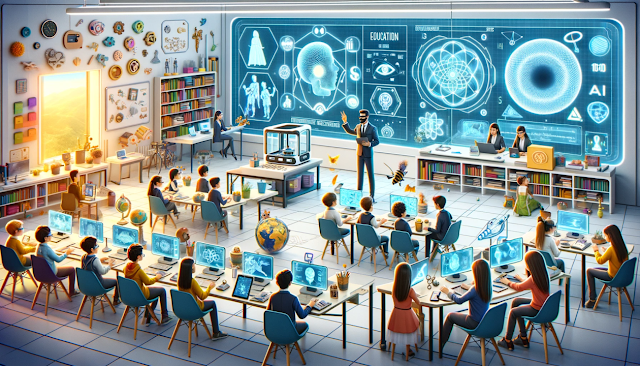what is future of classroom regarding technology?
As we navigate the 21st century, the landscape of education is evolving rapidly, influenced significantly by advancements in technology. The traditional classroom, with its chalkboards and textbooks, is being transformed into a dynamic, interactive, and engaging learning environment. The future of classrooms is poised to be more personalized, accessible, and innovative than ever before, thanks to various technological advancements. Here’s a look at how technology is shaping the classrooms of tomorrow.
1. Digital and Interactive Learning Tools
The future classroom will be heavily reliant on digital tools and interactive technologies. Smartboards are replacing traditional blackboards, allowing teachers to present multimedia lessons that cater to different learning styles. Tablets and laptops are becoming commonplace, enabling students to access a wealth of information and educational resources at their fingertips. Interactive learning apps and educational software are making learning more engaging and personalized, adapting to each student’s pace and style of learning.
2. Artificial Intelligence and Machine Learning
Artificial Intelligence (AI) and Machine Learning (ML) are set to revolutionize the way education is delivered. AI-powered systems can analyze student performance in real-time, providing instant feedback and identifying areas where students need more help. Personalized learning plans can be developed using ML algorithms, ensuring that each student receives the support they need to succeed. Additionally, AI tutors can assist students outside of classroom hours, offering explanations and answering questions.
3. Virtual and Augmented Reality
Virtual Reality (VR) and Augmented Reality (AR) are opening up new dimensions in education. With VR, students can take virtual field trips to historical sites, outer space, or inside the human body, providing immersive learning experiences that are not possible in a traditional classroom. AR can bring static images to life, allowing students to interact with 3D models and simulations. These technologies can make complex concepts easier to understand and learning more engaging.
4. Gamification of Learning
Gamification is another trend that is gaining traction in modern classrooms. By incorporating game elements such as points, badges, and leaderboards into educational activities, learning becomes more fun and motivating for students. Gamified learning platforms can track progress and reward achievements, encouraging students to stay engaged and motivated.
5. Remote and Hybrid Learning
The COVID-19 pandemic has accelerated the adoption of remote learning technologies, highlighting the importance of flexibility in education. The future classroom will likely be a hybrid model, combining in-person and online learning. This hybrid approach allows for a more flexible and inclusive education system, accommodating students with different needs and circumstances. Online platforms and tools enable students to participate in classes from anywhere, ensuring that education is accessible to all.
6. Collaborative Learning Environments
Technology fosters collaboration among students, both within the classroom and beyond. Online collaboration tools such as Google Classroom, Microsoft Teams, and various educational platforms enable students to work together on projects, share ideas, and provide peer feedback. These tools also facilitate communication between teachers and students, making it easier to track progress and provide support.
7. Data-Driven Decision Making
Data analytics is becoming a crucial component in the educational process. By collecting and analyzing data on student performance, attendance, and engagement, educators can make informed decisions to improve teaching methods and learning outcomes. Data-driven insights can help identify at-risk students early, tailor interventions, and optimize educational strategies.
8. Emphasis on Digital Literacy
As technology becomes more integrated into education, there is a growing emphasis on teaching digital literacy skills. Students need to learn how to navigate and critically evaluate online information, use digital tools effectively, and understand the ethical implications of technology use. Developing these skills is essential for preparing students for the future workforce.
Conclusion
The future of classrooms is bright, driven by the continuous advancements in technology. These changes promise to create more personalized, engaging, and effective learning experiences. However, it is crucial to address challenges such as digital equity, data privacy, and the need for ongoing teacher training to ensure that these technologies benefit all students. As we embrace the future, the goal remains the same: to provide high-quality education that prepares students for the challenges and opportunities of the 21st century.




Comments
Post a Comment